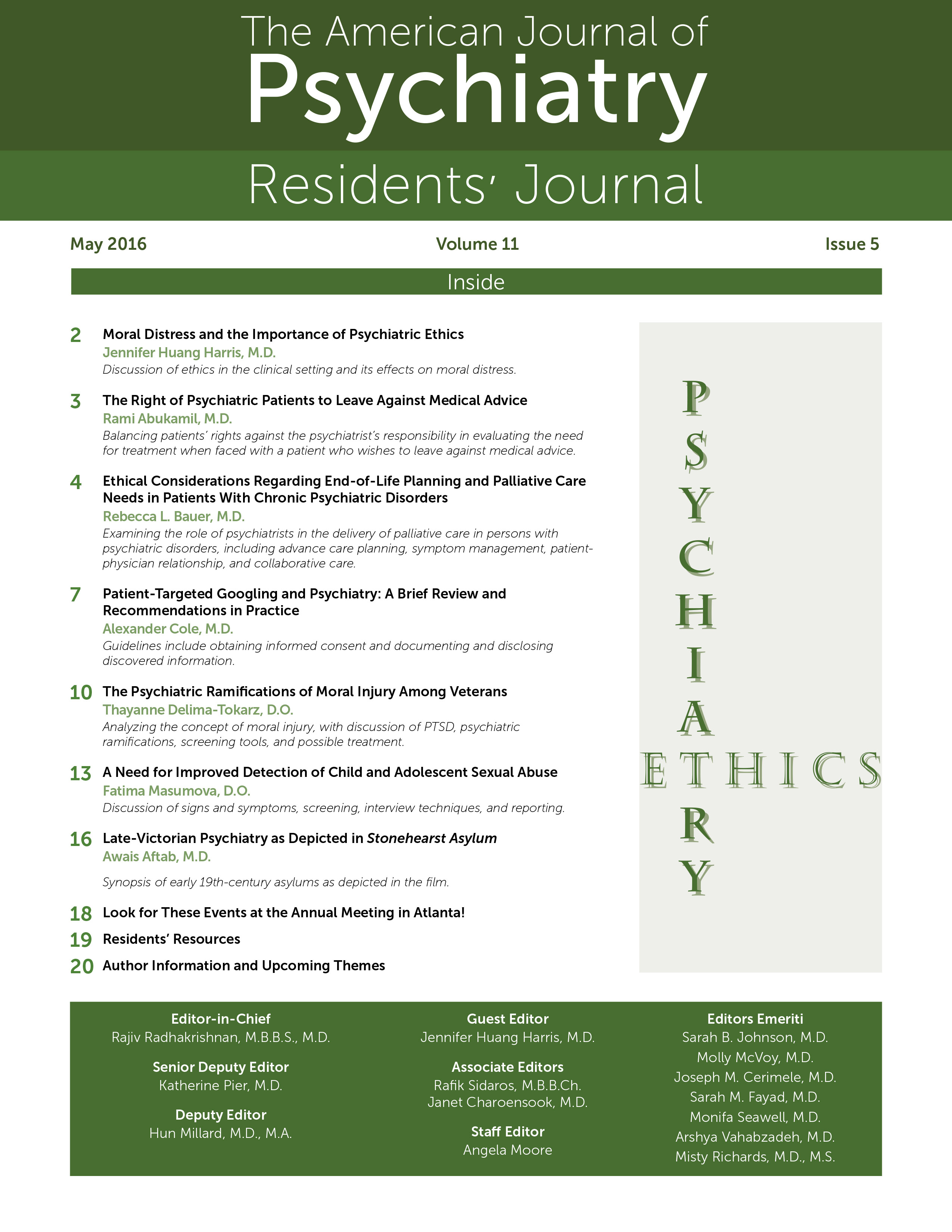A Need for Improved Detection of Child and Adolescent Sexual Abuse
References
- 1. : How much child sexual abuse is “below the surface”, and can we help adults identify it early? Front Psychiatry 2013; 4(58):1–10 Google Scholar
- 2. : Erroneous concerns about child sexual abuse. Child Abuse Negl 2000; 24(1):149–157 Crossref, Google Scholar
- 3. : The child sexual abuse accommodation syndrome. Child Abuse Negl 1983; 7(2):177–193 Crossref, Google Scholar
- 4. : Sex, lies, and statistics: inferences from the child sexual abuse accommodation syndrome. J Am Acad Psychiatry Law 2013; 41(3):412–420 Google Scholar
- 5. : Exposure to childhood sexual and physical abuse and adjustment in early adulthood. Child Abuse Negl 2008; 32:607–619 Crossref, Google Scholar
- 6. : Assessment of the harmful psychiatric and behavioral effects of different forms of child maltreatment. JAMA Psychiatry 2015; 72(11):1135–1142 Crossref, Google Scholar
- 7. : Psychopathology, childhood sexual abuse and other childhood adversities: relative links to subsequent suicidal behavior in the US. Psychol Med 2013; 31:965–977 Crossref, Google Scholar
- 8. : Psychological impact and treatment of sexual abuse of children, in Child Abuse and Neglect: Diagnosis, Treatment and Evidence. Edited by Jenny C. St Louis, Elsevier Saunders, 2011, pp 461–475 Crossref, Google Scholar
- 9. : Screening tools for child sexual abuse. J De Pediatria 2006; 82(6):409–410 Crossref, Google Scholar
- 10. : Effects of systematic screening and detection of child abuse in emergency departments. Pediatrics 2012; 130(3):457–464 Crossref, Google Scholar
- 11. : Development of a questionnaire for the assessment of sexual abuse in children and estimation of its discriminant validity: a case-control study. J De Pediatria 2006; 82(6):431–436 Google Scholar
- 12. American Academy of Child and Adolescent Psychiatry: Guidelines for the Clinical Evaluation for Child and Adolescent Sexual Abuse. https://www.aacap.org/aacap/policy_statements/1990/Guidelines_for_the_Clinical_Evaluation_for_Child_and_Adolescent_Sexual_Abuse.aspx Google Scholar
- 13. : Practice parameters for the forensic evaluation of children and adolescents who may have been physically or sexually abused. J Am Acad Child Adolesc Psychiatry 1997; 36(10 Suppl):37–56 Crossref, Google Scholar
- 14. : Critical issues in the assessment of child sexual abuse. Clin Child Fam Psychol Rev 1998; 1(4):231–252 Crossref, Google Scholar
- 15. : More than suggestion: the effect of interviewing techniques from the McMartin Preschool case. J Appl Psychol 1998; 83(3):347–359 Crossref, Google Scholar
- 16. : Reliable and fictitious accounts of sexual abuse to children. J Int Viol 1987; 2:27–44 Crossref, Google Scholar
- 17. US Department of Health and Human Services, : Child Maltreatment Report-2012. Washington, DC, US Department of Health and Human Services, 2012 Google Scholar
- 18. US Department of Health and Human Services, : Child Maltreatment Report-2006. Washington, DC, US Department of Health and Human Services, 2006 Google Scholar
- 19. : Clinicians’ description of factors influencing their reporting of suspected child abuse: report of the Child Abuse Reporting Experience Study Research Group. Pediatrics 2008; 122(2):259–266 Crossref, Google Scholar
- 20. Child Welfare Information Gateway: Mandatory Reporters of Child Abuse and Neglect. Washington, DC, US Department of Health and Human Services, Children’s Bureau, 2014 Google Scholar



